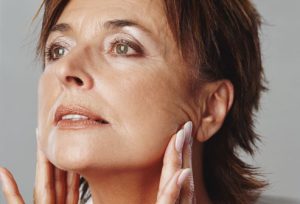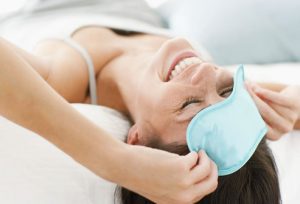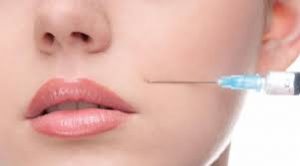ExquisSkincare
Mirror, Mirror, Say It Ain’t So
At some point, it’s hard to ignore the vivid signs of aging you see in the mirror — little wrinkles around your eyes or lips, age spots, maybe some sagging skin. There used to be few options for turning back the clock without going under the knife. But today, you can soften the effects of time on your face with many nonsurgical cosmetic procedures.

Nonsurgical cosmetic procedures are not without risks. You might have an allergic reaction to anesthetics on your skin or injectable fillers. Chemical peels, microdermabrasion, and lasers can cause scarring or make your skin lose color. But they’re often less risky than cosmetic surgery. Talk to your dermatologist about what to consider before you schedule a procedure.
If forehead creases are bringing you down, injections of botulinum toxin (Botox, Dysport, and Xeomin) can provide a temporary fix. They’re made with a purified version of the toxin from botulinum bacteria. In tiny doses, this toxin relaxes the clenched facial muscles that cause crow’s feet, frown lines, and the like. The shots take only a few minutes and cause little pain.
These treatments usually take 3 to 7 days before you start to see results. You’ll notice smoother skin where you got the shots. As the muscles slowly are able to contract again, lines and wrinkles reappear. To keep them away, you’ll need injections every 3 to 6 months at first, and less often after that.
Chemical peels use an acid solution to remove old, dead cells from the outer layers of skin. The solution often has a mix of glycolic acid, lactic acid, salicylic acid, phenol, or trichloroacetic acid (TCA). It can take about 15 minutes to apply, and you might feel some stinging and irritation. Over the next few days, your skin’s upper layers will peel, revealing newer, smoother-looking skin.
A series of peels can reduce age spots, fine lines, acne scars, and wrinkles caused by sun damage or aging. Mild treatments, like the one shown here, have more subtle results. You can have one every few weeks until you get the results you want. Deeper peels cause swelling and crusting at first, but have more dramatic results in the end. You can get moderate to deep peels again in 6 to 12 months.
You may have heard of dermabrasion, a procedure that sands away the top layer of skin. It can treat severe sun damage, but it causes bleeding and needs a week of recovery time. Microdermabrasion is a nonsurgical option. Often called a “power peel,” it blasts the skin with tiny crystals that exfoliate the outer layer. This can reduce fine lines, brown spots, and mild acne scars — usually with little recovery time.
As microdermabrasion exfoliates, it sucks the powdery dead skin cells from your face (shown on left). Right after, the new skin looks pink and feels tight, like a sunburn (shown on right). It usually gets better in about 24 hours, leaving subtle improvements in tone and texture. It can take up to 10 sessions, a few weeks apart, before you can clearly see the differences.
Thermage Basics
For saggy, crepe-like skin, Thermage can come to the rescue. This device uses radio-frequency energy to heat your skin. The heat prompts your body to make collagen, which tightens skin. Thermage can be painful, but one treatment is usually enough for good results.
Droopy eyelids respond especially well to Thermage. You won’t see results until 4 to 6 months after the procedure, but the difference can be dramatic.
Nonablative Laser Basics
Nonablative lasers get under the skin’s surface without damaging the outer layer. They help your skin make collagen, reduce fine lines, and improve tone and firmness. The procedure can be painful, so your doctor will put medicine on your face to numb it. Because nonablative lasers don’t damage surface skin, you won’t need as much recovery time as for other treatments.
Nonablative laser therapy is a good option for people who want to improve skin tone and texture without taking time off from work. You might have mild redness after a session, but it will get better quickly. For the best results, plan on four to six treatments with a few weeks in between.
Nonablative Laser for Melasma
Nonablative lasers are especially good at treating melasma, the splotchy brown patches that often happen during pregnancy. You can see a striking difference on the cheek in this photo after four treatments.
Diode Laser Basics
People with severe acne can get dramatic results from diode lasers. They can destroy the oil glands that feed acne. Like nonablative lasers, they get under the surface without damaging the skin’s outer layer. The main side effect is red, inflamed skin, but it won’t last long. You will need some time to recover, though.
You may need a few sessions to get the best results.
Intense Pulsed Light (IPL)
Like lasers, IPL goes below the surface to a deeper layer of skin called the dermis. Short pulses of light heat and destroy cells to start renewing your skin. Unlike a laser, IPL uses a broad spectrum of light that can treat different kinds of blemishes at the same time. The treatment is usually painful, so ask your doctor how you can be more
IPL can reduce the redness that comes with rosacea or lighten dark circles under your eyes, which are caused by clusters of blood vessels showing through the skin. A few sessions will vaporize the blood vessels, leaving the surface unharmed. IPL can also remove unwanted color patches (like melasma and age spots) by destroying pigmented cells. It also prompts the skin to make collagen, which fights fine lines and wrinkles.
Cosmetic Filler Basics
Cosmetic fillers are substances that smooth wrinkles and folds by bulking up the tissue underneath. Doctors inject them directly into problem areas. Collagen is the oldest and best-known cosmetic filler. Newer options include hyaluronic acid, calcium hydroxylapatite, poly-L-lactic acid, polymethylmethacrylate beads (PMMA), and ordinary fat that comes from your own thigh or belly.
The results of hyaluronic acid injection, can last 9 months or longer. The effects of collagen injections vary, but you may need more every 3 to 6 months. Changes also vary if you inject a wrinkle with fat cells — they can be long-lasting or fade in 4 to 6 months. Results from PMMA are often long lasting
Fillers can also mask tired-looking “bags” and dark circles under the eyes by filling in the hollow area around the eye socket. This strategy fights shadows, puffiness, and a sunken look to your eyes.
Many of the same cosmetic fillers doctors use to treat wrinkles and dark circles can also plump your lips. Collagen and hyaluronic acid injections last for a little while. You can get long-lasting results with injections of fat cells into the lips.
Exquis Skincare products are the best alternative for Cosmetic Surgery. These products are available online at http//www.ExquisSkincare.com
ExquisSkincare


